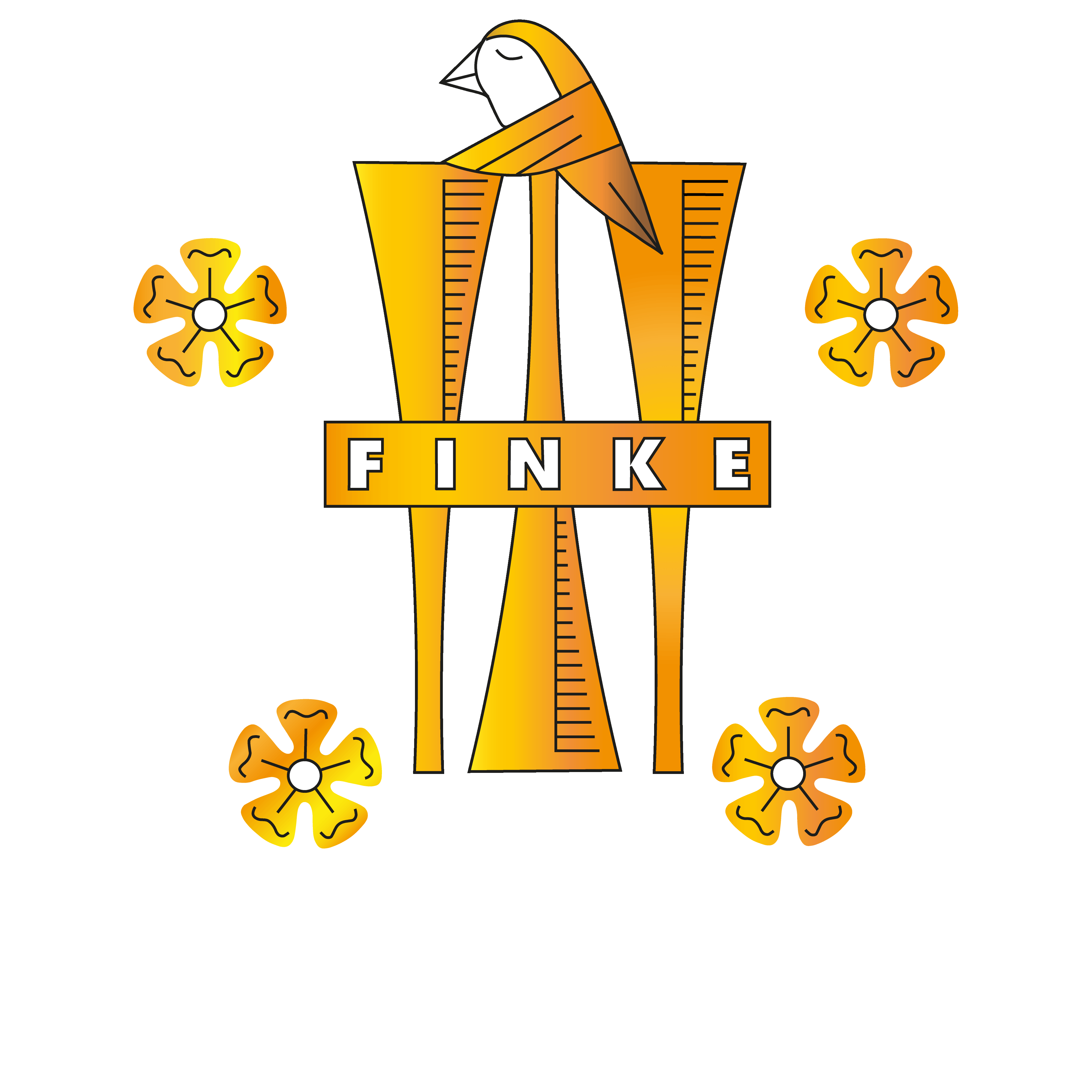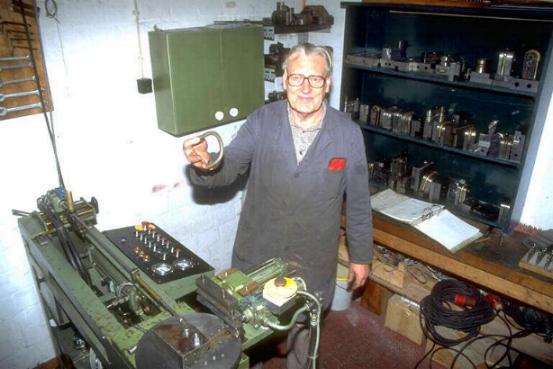

Helmut Finke
Helmut Finke, Gründer der Firma, wurde am 7.April 1923 in Herford geboren. Seinen ersten Trompeten-Unterricht bekam er zwölfjährig bei einem Militärmusiker. Im Jahr 1943 begann seine Ingenieur-Ausbildung im Maschinenbau. Gleichzeitig intensivierte er sein Trompeten-Studium bei einem Orchestermusiker in Bielefeld.
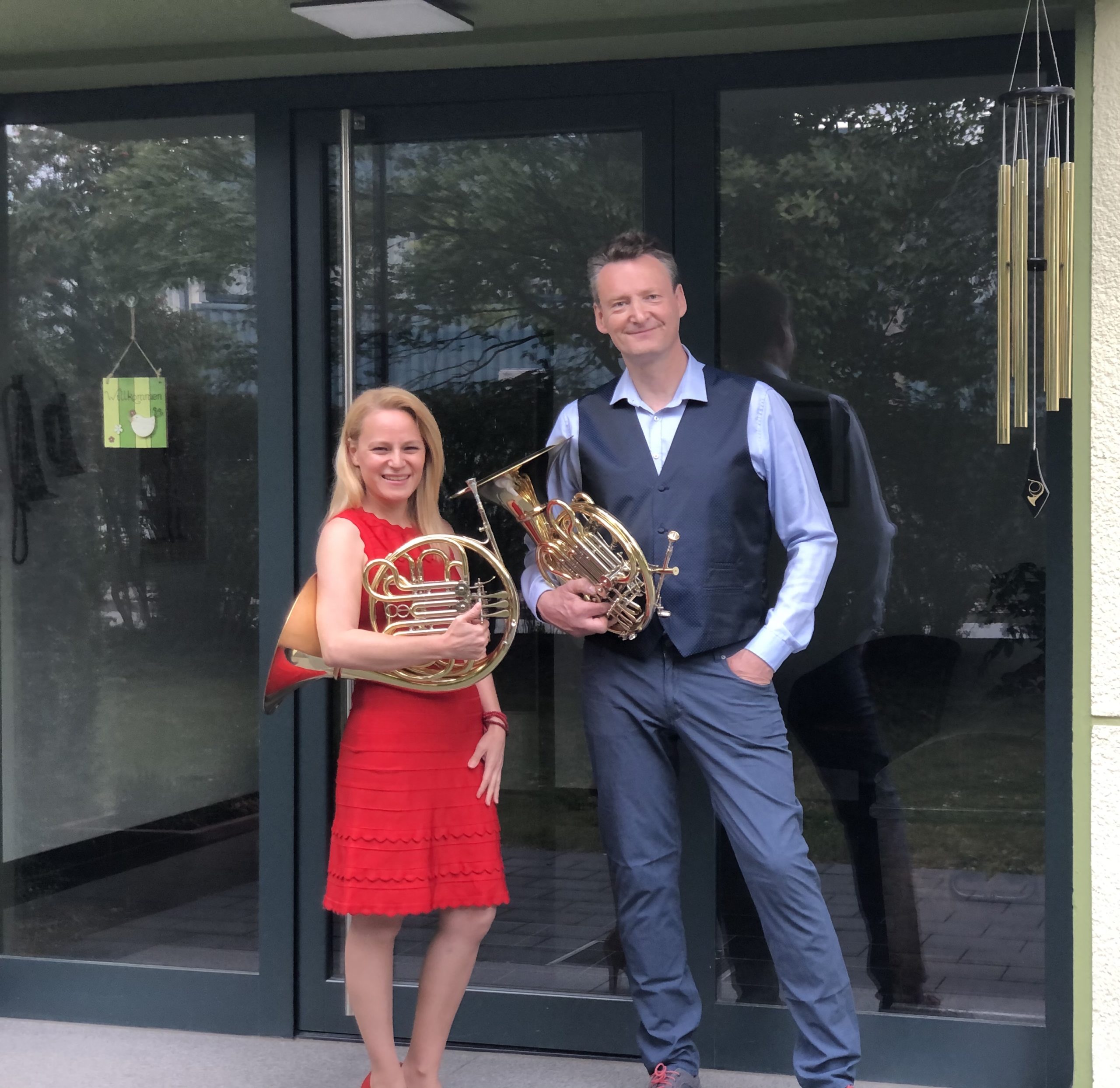

Johannes Finke und
Mariela Rodriguez Finke
1983 begann Johannes Finke seine Ausbildung zum Metallblasinstrumentenmacher und schloss diese 3 Jahre später erfolgreich ab. Als Gesellenstück baute er sein erstes eigenes Doppelhorn. 1992 folgte der Abschluss des Meistertitels. Ein Jahr später übernahm er die Leitung des Unternehmen, nachdem sich sein Vater mit 70 Jahren aus der aktiven Geschäftsleitung zurückzog.
2019 heiratete Johannes die argentinische Hornistin Mariela Rodriguez. Seitdem führen beide den Familienbetrieb gemeinsam.
Philosophy and aims
Unsere Instrumente werden mit hoher handwerklicher Kunst und Liebe zum Detail angefertigt. Durch mehr als 70 Jahre Erfahrung im Instrumentenbau, die intensive Forschung und Weiterentwicklung unserer Modelle erfüllen wir die hohen Erwartungen, die heute an Musikinstrumente gestellt werde.
FINKE-Waldhörner sind das Produkt einer einzigartigen philosophischen Annäherung an die Herstellung von Hörnern. Es ist möglich, die Tradition des Hornstils und seines Tones zu bewahren und dabei gleichzeitig eine umfassende Verbesserung der Ansprache, Intonation und Flexibilität zu erreichen. Dementsprechend zielt unsere Entwicklung des Instruments darauf ab, den klassischen Waldhornton zu bewahren, dem Musikern aber ausreichend Spielraum zur Entfaltung zu lassen. Probieren Sie unsere Hörner aus und Sie werden entdecken, welche neuen spielerischen Möglichkeiten sich durch diese Entwicklungsarbeiten ergeben.
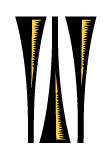

The three bells
The three bells have been part of the logo since the beginning. They have been slighly modified. The original idea came from Helmut Finke.
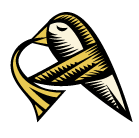

The bird
Der Name Finke (Vogelart) taucht als Berufsname „Vinck“ oder „Vink“ für den Vogelfänger erstmals um 1223 auf. Auch als Bezeichnung für einen unbeschwerten sangesfrohen Menschen.


The rose
Seit Jahrhunderten ist die Lippische Rose Wappensymbol für das Fürstentum und den Freistaat Lippe. Der heutige Kreis Lippe beginnt unweit unserer Firma, gekennzeichnet mit Grenzsteinen, die das Rosen-Symbol aufweisen.
History
In 1942 Helmut Finke served in the German army. 1943 he was badly wounded in Russia. After he left the hospital he was released form the military service, so he started to study on a engineering school until 1945 when this was closed a few months before the war ended. When the Herford symphony orchestra was reestablished after the war he decided not become a mechanical engineer and instead he became the 2nd trumpet player in this orchestra, on the first chair was Walter Holy.
Im Jahr 1950 erwarb Helmut Finke günstig eine Drehbank und begann Mundstücke anzufertigen. Dazu kamen bald kleine Reparaturaufträge an Blechblasinstrumenten. Schon ein Jahr später baute er seine erste Trompete aus Teilen. Und nun entschloss er sich endgültig zum Aufbau einer Werkstatt und damit zur Herstellung von hochwertigen Metallblasinstrumenten.
In 1954 the increasing demand made it necessairy to hire two workers. Encouraged by Wilhem Ehmann, he started in the mid 50’s to make copies of sackbuts and baroque trumpets. He was the first maker on this field in the 20th century. Soon, the line of instruments includes high trumpets and french horns and other bigger brass instruments. In 1959 Helmut Finke designed with the help of Otto Steinkopf the coiled natural trumpet (also known as Clarino trumpet) from the well know picture of Gottfried Reiche.
During this period he was an active musician. The piccolo trumpet and the natural trumpet were his specialties. With his friend Walter Holy and later Ingus Schmidt they were the first trumpet players of the Capella Colonienis (the chamber orchestra of the radio station cologne). In the workshop, he by now employed 10 craftmen. The increasing demand and more machinery made it necessairy to leave Herford and to build a modern facility in Exter.
Helmut Finke was always facinated by the french horn as a technical very demanding brass instrument. In the late 60ies he decided to specialise on this instrument. At that time not many companies were making high quality orchestra horns.
Finke developed a complete line of horns. This was the initial for the long and tight cooperation with the Physical Technical Institute in Brunswick with its branch for physical acoustics on musical instruments. In 1973 the first descant double and triple horn were made, followed by several patents. The french horns, trumpets and trombones have become the main products.
For Finke it has always been quality decission to make all imporant parts in the own workshop. With the complete manufacturing knowledge for all parts, the control and further developements could be realized. Finke is one of the few makers that produces the major parts like the bells, valves and the crooks in their own workshop.
